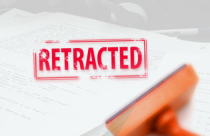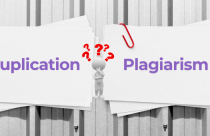15 Most Common Reasons for Journal Rejection

Every researcher aims to publish their work in a high impact journal. However, publishing research is no easy task, and manuscript rejection is a common occurrence in academic writing. Every researcher faces rejection of their manuscript at some point in their career. Every failure is a stepping stone to success, and researchers can learn from their mistakes to ensure a smooth publication journey for their next manuscript.
Up to 90% of the papers submitted are rejected due to language errors, missing publication readiness, and other issues. Hence, making use of online free tools their like Trinka can help avoid such rejections. Trinka is world’s first language enhancement tool custom-built for academic writing. Trinka’s robust AI caters to the various requirements of academic writing including style guide preferences, subject-specific corrections, formal tone, sentence structure, etc. Further, it evaluates a manuscript against 20+ checkpoints that match journal editorial checks which lets researchers submit it to their desired journal confidently.
In this article, we list down 15 most common errors that could potentially lead to the rejection of your manuscript.
- A misleading title can lead to immediate rejection of your manuscript. You need to ensure that your title conveys what your study is about. A misleading title that does not set the limits of a study is a serious problem.
- Misleading abstracts is another issue that can lead to the rejection of a manuscript. Make sure that the results and conclusions in the abstract are the same as the paper.
- Incomplete introductions are considered as a major writing deficiency. A complete introduction must ideally contain the study question, hypothesis, and study objectives. A complete introduction is essential to convey the importance of your work.
- Authors often tend to replicate their methodology in all their papers. Reproducing material and methods from your previously written paper is considered as self-plagiarism if it is not cited properly. The methodology should also be tailored to reflect on the current study. Some methods can become outdated as a result of newer techniques or technologies.
- Errors in the results section are a common occurrence. Authors tend to leave out information to meet the word limit specified by the journal. Leaving out important information in the results can lead to the rejection of the manuscript.
- Illogical discussions are another error that could lead to an outright rejection of the manuscript. Errors in the discussion include but are not limited to – the disconnected flow of ideas, expansive content that does not focus on the results, biased view, omitting key findings from other investigators, overlooking the limitation of the study.
- Submitting a manuscript to a publisher where there is a mismatch with its aims and scope can lead to desk-rejection of the manuscript by the editor. Thoroughly go through the author instruction and ensure that your manuscript meets the aims and scope of the journal. Do you know Trinka can help you avoid rejection by checking whether your manuscript matches the scope of a journal? It also suggests journals matching your manuscript!
- Indulging in plagiarism or self-plagiarism is a serious ethical breach resulting in rejection of your manuscript. However, one can avoid committing this misconduct by using online plagiarism checker to acknowledge sources even if you are paraphrasing sentences.
- Research papers should be novel and original, and any paper that does not meet this criterion will not be considered for publication.
- Inflated results are another cause of rejection, and inflation of results is often detected during the peer review process. Falsification and inflation of results should be avoided.
- Non-adherence to scientific and writing ethics can lead to rejection of your manuscript. Authors are expected to be responsible and adhere to the ethical guidelines laid down in their field of study.
- Non-adherence to author instructions specified by the journal can lead to a delay in the publication of your work or outright rejection by the journal editor.
- Technical flaws in the content of your manuscript can also lead to its rejection. Common technical flaws include discrepancy between the abstract and the manuscript, no relation between the discussion and the results, etc.
- Flaws in the study design are another major reason for rejection by journals. Flaws in the study design would include poorly formulated study questions, and improper methodology, selection of the wrong representative samples, improper statistics, etc.
- Poorly written manuscripts (poor language, grammar, word choice, tense, style of writing) can also lead to the rejection of a manuscript. However, this can be avoided with Trinka. Its exclusive features are designed for correcting all such errors easily.
This list is not exhaustive, and there are several other factors that journals may consider before rejecting your manuscript. Sometimes, rejection may also be due to causes that authors have no control over, such as the journal receiving two papers dealing with the same topic, number of submission received by the journal, peer reviewer quality, space constraints, etc. However, authors need to ensure that their manuscripts are error-free and meet the high standards of publishing before submission to an impactful journal. The best way to achieve publication-readiness is to use Trinka. Trinka works with the author and enhances the writing quality, making it ready for the global audience.









